102 Digital Marketing Terms Explained
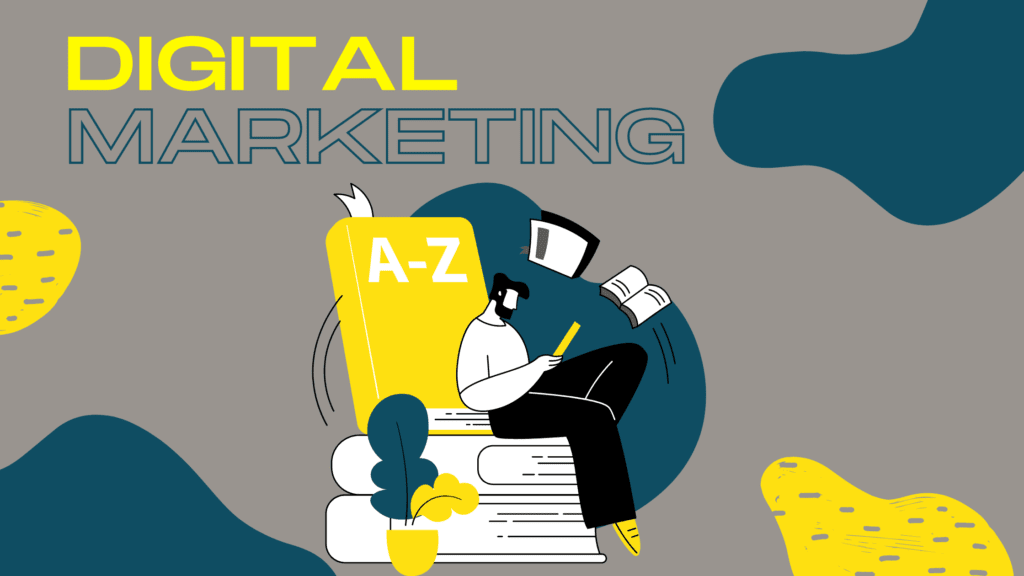
A/B Testing
A method of testing which version of a particular website element, landing page, ad, or email campaign is most effective in returning a particular outcome.
Once both variations have had enough time in front of your audience, you choose a “winner” by evaluating relevant metrics, such as click-through rate, engagements, or return on investment.
AdSense
Google’s platform for website monetization, which consists of both advertisers
Alt Text
Text that replaces an image on a web page; is often used in conjunction with screen readers for sight-impaired visitors.

Anchor Text
The clickable text that a hyperlink is attached to.
Marketing Automation
Tools, strategies, and processes for automatically implementing certain marketing efforts, such as email responses, AI integrations, and social media posts.
Average Position
A term used by AdWords to describe where your paid ads rank against those of other businesses.
B2B
Stands for business-to-business; marketing designed for a commercial target audience.
B2C
Stands for business-to-consumer; marketing designed for the “everyday” customers.
Backlink
A part of inbound marketing that refers to links on outside sites directing back to your web page.
Bing
The second-most frequently used site amongst search engines; holds 3.3% of the total share of all user searches.
Black Hat
Using unethical and sometimes illegal strategies for search engine optimization (SEO), inbound marketing, email marketing, etc.
Common black hat tricks include link farming and keyword stuffing.
Blog Post
In marketing terms, a blog post is a piece of digital content written by or for a business to attract, inform, or persuade customers.
These are most often housed on your content management system, but can appear on other domains as a guest post.
Bottom of Funnel (BOF)
The final phase of the sales funnel that focuses on customer relationship management and affirming their decision to choose your product or service.
Bounce Rate
The ratio of website visitors who left after only viewing one page.
Brand Awareness
A measure of how familiar consumers are with a particular brand.
Marketing strategies employ assets like logos, colors, online advertising, and website content to increase brand recognition.

Brand Equity
Societal perceptions of trust, authenticity, and transparency about a brand.
Brand Loyalty
Refers to a customer’s likelihood to continue choosing a product or service over competitors.
Business Page
On Facebook, a business page is a commercially-held profile used for social media marketing and customer communication.
Buyer Personas
A buyer persona is a graphical, fictional representation of your target audience, including demographic data, an ideal customer journey, and the motivation behind a purchase.
Customer Acquisition Cost (CAC)
An equation for calculating the total cost of gaining a customer with your marketing campaigns.
You can calculate customer acquisition cost by dividing the total spent on sales and marketing by the number of new customers gained.
Customers Lifetime Value (CLV)
The amount of money a customer brings to your business throughout the entire buying and repurchase process, minus customer acquisition cost.
Competitive Analysis
Structured research into competing businesses within your industry to evaluate their marketing strategy, customer satisfaction, and product or service offerings.
Content Management System (CMS)
Sites such as WordPress, Squarespace, and Drupal that allow users to modify, add, or generate online content.
Content Marketing
Creating high-quality digital resources, such as blog posts, videos, and graphics, that use expertise and information for customer marketing.
Conversion
Customers achieving a particular, business-specified goal, such as subscribing for email marketing or completing the buying process.
Conversion Rate
A comparison of the number of customers who completed a particular action versus those who did not.
Crawler
Search engines deploy crawlers to index digital content and evaluate how well a web page can answer a user’s query.
Crawlers are fundamental in determining what appears on search engine results pages.
Call to Action (CTA)
A lead generation strategy that encourages users to click a link or follow a written directive the next action a user or qualified lead should take to continue moving through the marketing funnel.
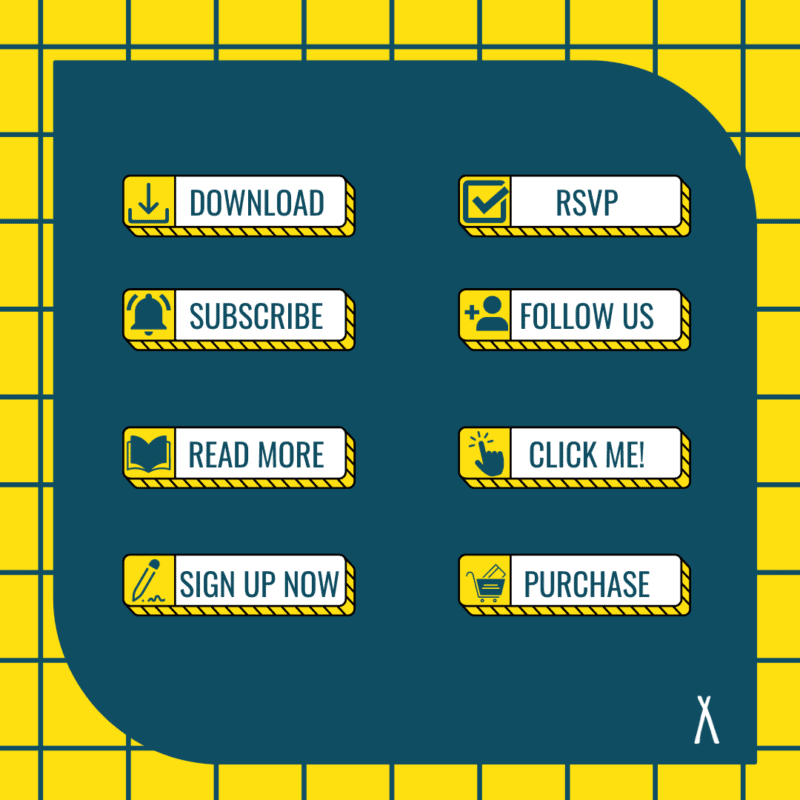
Click-Through Rate (CTR)
The percentage of your audience that clicks on a link or button.
Customer Lifecycle
The stages that your audience goes through on their way to becoming loyal brand enthusiasts. Often used interchangeably with “sales funnel” and “customer journey.”
Digital Marketing
A range of online strategies for increasing brand awareness and aiding in customer acquisition that includes email marketing, content marketing, landing page marketing, and marketing automation, amongst others.
Direct Traffic
In Google Analytics, direct traffic is any incoming visitors that type, paste, or click a bookmark of your website’s URL.
Dofollow backlinks
An HTML tag that allows search engine crawlers to use an outside domain’s backlink as a measure of authenticity for your website.
eCommerce
One of the marketing terms for online shopping.
Email Marketing
Sending emails to promote your brand and improve customer relationships.
Engagement Rate
A measure of how many active interactions people have with your social media content in the form of likes, shares, and saves.
Evergreen
Social, email, and content marketing campaigns that aren’t seasonal, but instead can be leveraged as a long-term customer acquisition tool.
Exit Rate
The percentage of users who exited your website from a particular page, regardless of whether or not they visited other pages on your domain prior to exiting.
Not to be confused with bounce rate, which is specific to users who visit only one page on your site during the session.
Facebook Advertising
Paid advertising through the Facebook platform.
Featured Snippet
Often referred to as “Position 0,” featured snippets are special, highly-optimized pieces of content that Google places above the 1st ranking search result.
Funnels
A set of marketing terms that describe the customer journey as top-of-funnel, middle-of-funnel, and bottom-of-funnel.
Top-of-funnel is a very broad group that includes all prospects, with the focus on building brand awareness.
Middle-of-funnel consists of a prospect group that transitions into a marketing qualified lead, or those who are specifically looking for a relevant product or service but haven’t made a purchase decision.
Bottom-of-funnel are those who are ready to buy. At this point, your marketing strategy should pivot to assuring customer success and satisfaction while overcoming doubts.
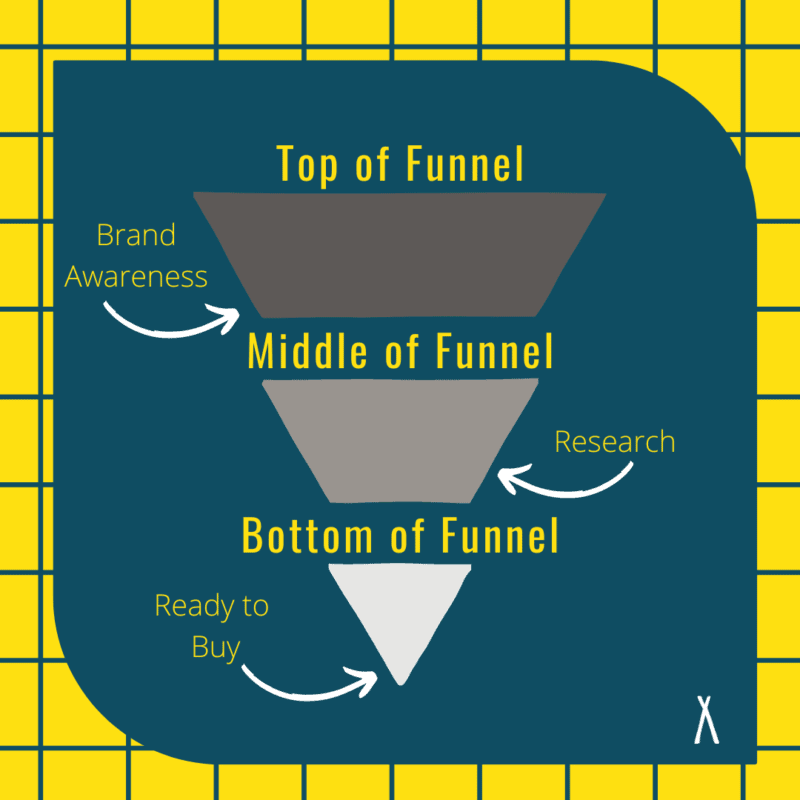
Google Ads
The Google-led platform for advertisers to purchase advertising space on search engine result pages.
Google Algorithm
An incredibly complex system of quality-control factors that Google implements to determine the best indexed pages to answer a user query.
Google Analytics
Google’s platform for assessing your website, traffic, and rankings in a concise, customizable dashboard format.
Google My Business
The “card” that appears in Google’s sidebar when a user makes a query about your business.
Depending on your industry and the information you provide, it can include information like your hours, address, phone number, a map, and more.
Hashtags
A metadata tag (#) that turns words into searchable terms. It’s most often seen on social media platforms, particularly Twitter and Instagram.
Impressions
The number of social media site users who see an ad, even if they don’t engage with it.
Instagram Advertising
Using the Instagram platform to serve content, ads, and information to active users.
Instagram Stories
An Instagram feature that allows users to post content that disappears after 24 hours.
Keyword Density
The number of times a keyword is used in a piece of content as a ratio to the total number of words.
Ideally, you should aim for 1-2% keyword density or 1-2 instances per 100 total words.
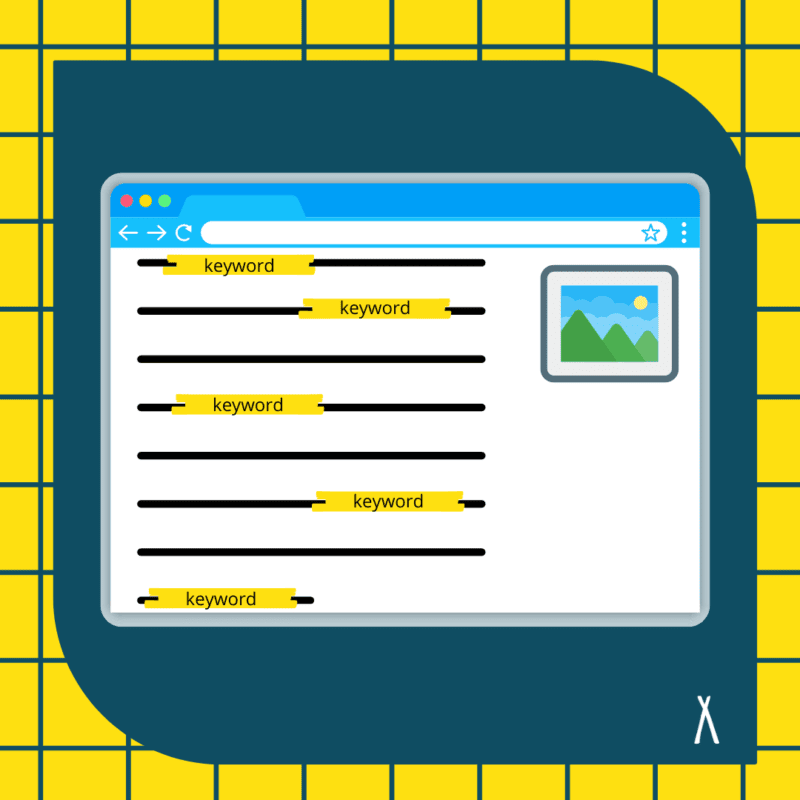
Keyword Stuffing
Blackhat search engine optimization that attempts to manipulate rankings by using an overtly large number of instances of the same word or phrase on a web page.
Keywords
A list of specific words users are likely to search through all phases of their buying process.
SEO relies on the intelligent use of keywords in the content, headings, and alt text of your web pages.
Keywords Research
Specialized, data-driven research into keywords that your target customers are most likely to use in their search queries.
Key Performance Indicator (KPI)
A key performance indicator is a metric defined by a business to evaluate digital marketing efforts.
Examples include click-through rate, bounce rate, customer acquisition cost, customer lifetime value, and customer satisfaction.
Landing Page Optimization
Improving a landing page to appeal more to your target audience and increase how many customers follow through on your call to action.
Lead nurturing
Using buyer personas, market research, and customer feedback to guide potential customers through the sales funnel.
Lead nurturing is crucial at all stages of the customer journey.
Leads
Potential customers who have shown passive or active interest in your business.
Link profile
A list of all of your inbound links on other websites, along with general overview of the outside domain’s legitimacy.
Local SEO
A marketing strategy specific to brick-and-mortar businesses that involves using search engine optimization to increase local customer awareness.
Longtail Keywords
Very specific keywords consisting of multiple words to help narrow search results.
Users typically use more longtail keywords towards the end of the buying process.
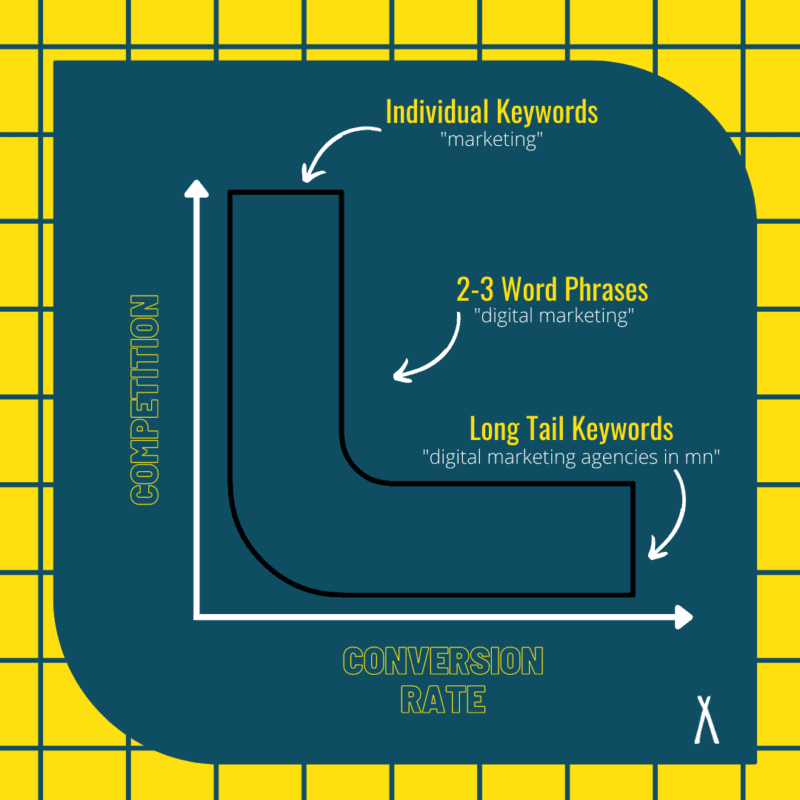
Market Segmentation
Splitting your target audience into multiple groups based on a shared characteristic, such as age or location.
Each segment should have its own buyer persona to help with targeted marketing.
Marketing Campaigns
A broad range of promotional strategies intended to aid in lead generation and attract new customers to your product or service.
Marketing campaigns can be traditional or digital.
Meta Keywords
HTML tags that indicate the specific keywords a web page is trying to rank for.
Metadescriptions
A text snippet underneath your page link on a SERP.
Google prefers metadescriptions that include a keyword and are no longer than 155 characters.
Mobile Advertising
Ads optimized specifically for mobile devices, including SMS marketing, responsive banner ads, or click-to-call featured snippets.
Middle of Funnel (MOF)
The second stage in the sales process is where your business works to turn a qualified lead audience into new customers through trust-building and direct marketing of your brand, product, or service.
Niche Marketing
Creating a customer marketing strategy attuned to a very specific identity, pain point, or demographic trend to increase your chances of finding a sales-qualified lead.
Businesses should create a buyer persona specific to each niche audience they intend to target.
Nofollow backlinks
An HTML tag that indicates search engine crawlers should ignore a link, which in turn lessens its impact on rankings.
On-page SEO
Optimizing the content and format of your website to improve search rankings.
Organic search traffic
Unpaid, inbound marketing traffic from a search engine results page.
Outbound Marketing
Reaching out to customers with cold calls, emails, direct mail, in-person conversations, etc. to place your brand in front of as many eyes as possible.
Page Speed
How long it takes for your website page to load once a user navigates to it.
Pain Point
Problems that customers face.
Identifying and offering solutions to pain points is crucial for lead generation and plays a pivotal role in sales enablement.
Penalty
A severe loss in rankings or complete exclusion from SERPs.
Domains can incur penalties for using black hat tactics like duplicating content, participating in schemes to increase inbound links, hiding text on web pages, etc.
Pay-per-Click (PPC)
Paying for ads only when a user clicks on it.
Proposal
A persuasive report outlining the benefits of your product or service to a client.
These are most often created by digital marketing agencies, consultants, freelancers, and other business-to-business industries.
Quality Score
Google Ads metric on a scale of 1-10 that compares your ads to others based on keyword data.
Queries
The combination of words that users type into a search engine to generate a search engine results page.
Rankings
The position of your web pages when users input a particular query into search engines.
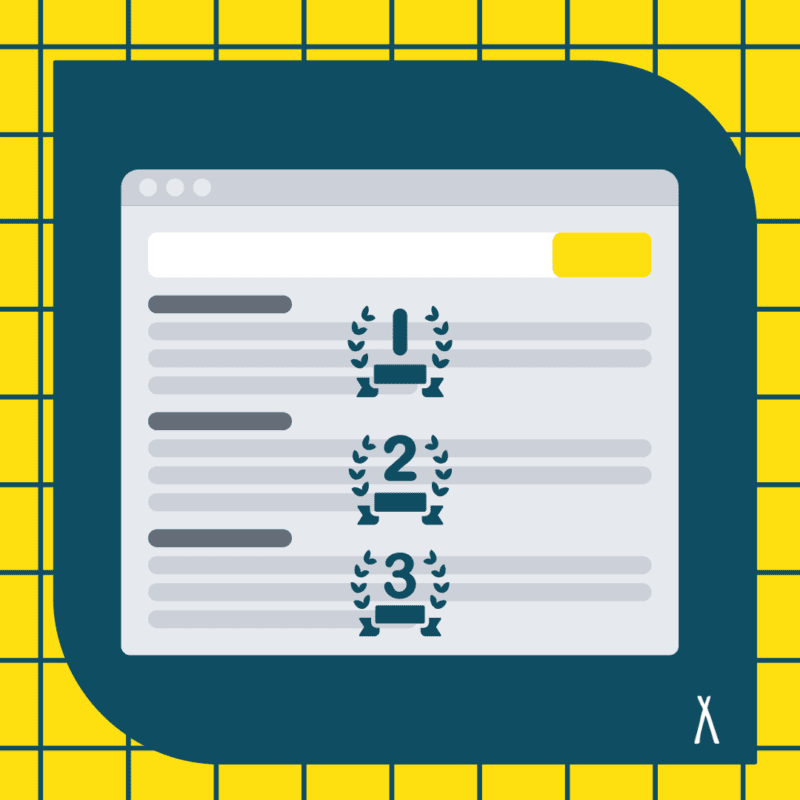
Reciprocal Links
A mutually beneficial inbound marketing strategy that consists of two or more brands agreeing to link back to each other’s site.
Referral Traffic
Inbound marketing efforts based on website traffic from links on outside web pages or social media accounts.
Relevance Score
A Facebook-specific metric based on the number of positive interactions your paid advertising receives.
A higher relevance score indicates that there is more positive feedback than negative.
Remarketing
Delivering targeted ads to customers based on prior actions they took, such as speaking with a sales rep or clicking on banner ads.
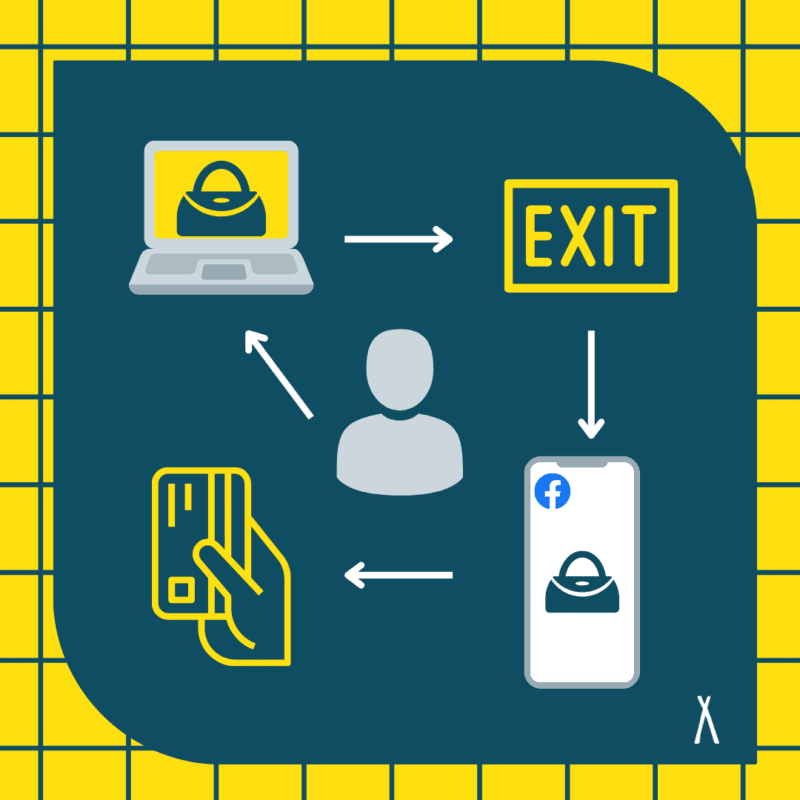
Return on Investment (ROI)
The amount of revenue you generate from a particular marketing campaign minus your total cost.
Sales Cycle
Also known as the sales funnel or customer lifecycle, the sales cycle is the process through which online users become new customers and eventual brand enthusiasts.
Search Engine Marketing (SEM)
Creating paid ads for search engines.
Search Engine Optimization (SEO)
Increasing visibility on search engines via keyword research and content marketing.
Search Engine Results Pages (SERPs)
The list of links returned after a user enters a query into search engines.
Search engine optimization (SEO) is necessary for ranking higher on a search engine results page
Social Media Traffic
The number of people who visit your website via social media marketing campaigns and posts.
Target audience
Groups who are most likely to express interest in your business and the focus of your marketing message.

Title Tag
HTML code that designates a particular piece of text as the title of the web page.
Top of Funnel (TOF)
The first stage of the sales funnel is where potential customers are looking for information about a problem or topic of interest but are not necessarily ready to invest in a product or service.
Qualified Lead
Potential customers who meet the criteria of your target audience and customer success metrics.
A qualified lead is more likely to become a customer than a non-qualified lead.
Unique Selling Proposition
A brand-specific asset that sets you apart from your competitors, such as creativity, stance on social issues, and overall product or service value.
Video Marketing
Online marketing efforts centered on video content to engage, inspire, and inform the customer journey.
Visits
Website traffic metric specific to the number of people who navigate to a web page.
Often measured when assessing inbound marketing campaigns that include a landing page.
Webinars
A portmanteau of “web” and “seminars” refers to online lectures, training, and discussions about a certain topic.
Website Analytics
Evaluating your own website to optimize the user experience and interface.
Ofter part of a marketing research strategy for increasing qualified lead nurturing and leading customers through a successful sales cycle.
White Hat
Legitimate marketing activities– such as search engine optimization and high-value content creation– to increase website traffic and target customers.
White Papers
Highly formal, authoritative report and business’s stance on a complex topic, current event, or societal issue.
Word-of-Mouth Marketing
Sales acceleration tool based on encouraging customers to share their feelings about your product or service with friends, family, and social media followers.
Word-of-mouth marketing is an excellent indicator of customer satisfaction and customer loyalty.
Yelp
Database of customer reviews and recommendations with a focus on restaurants, entertainment venues, and personal services in a local area.
YouTube Advertising
A paid advertising strategy for creating video content to reach YouTube users; these ads show up before/during videos or in the search results.